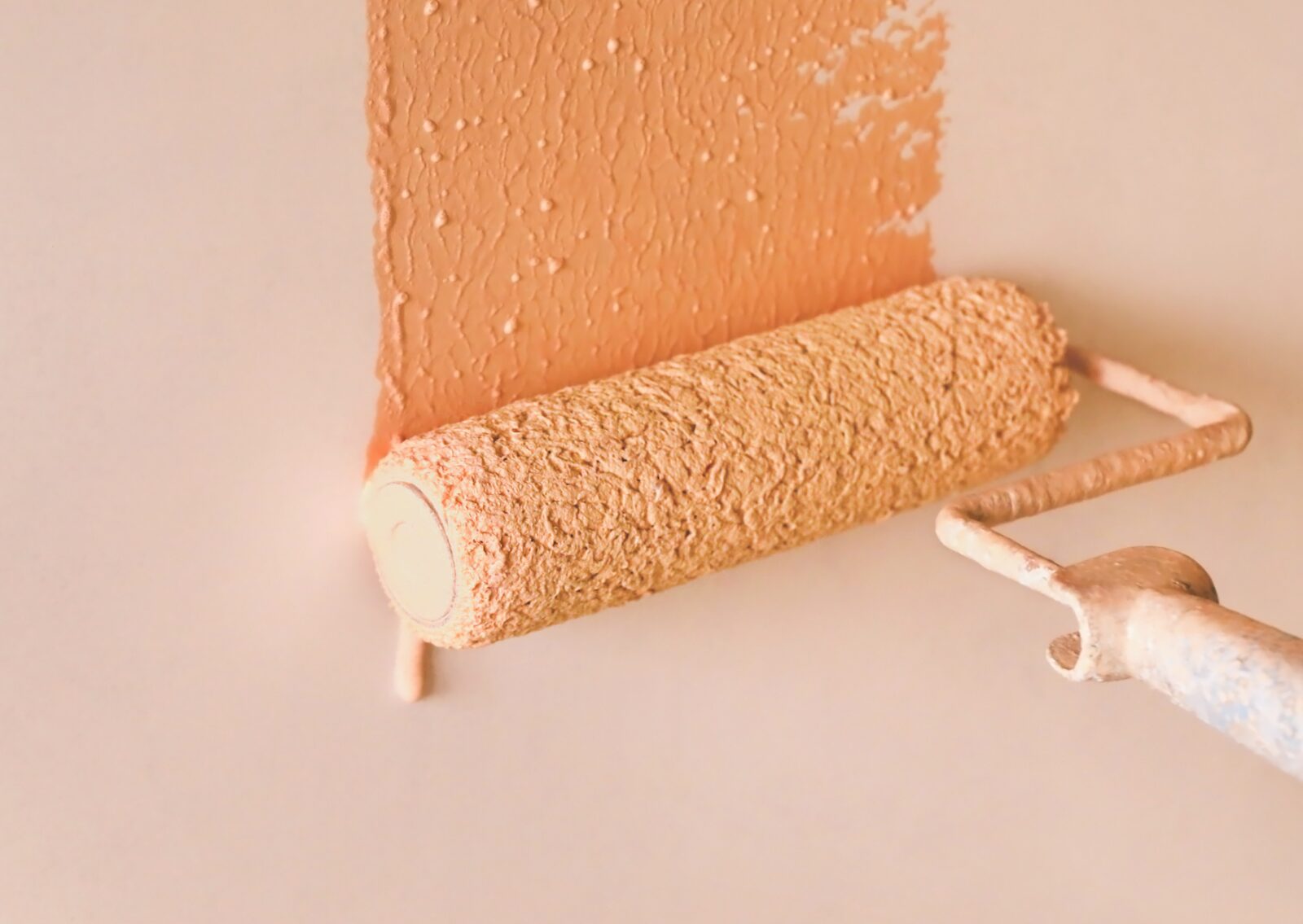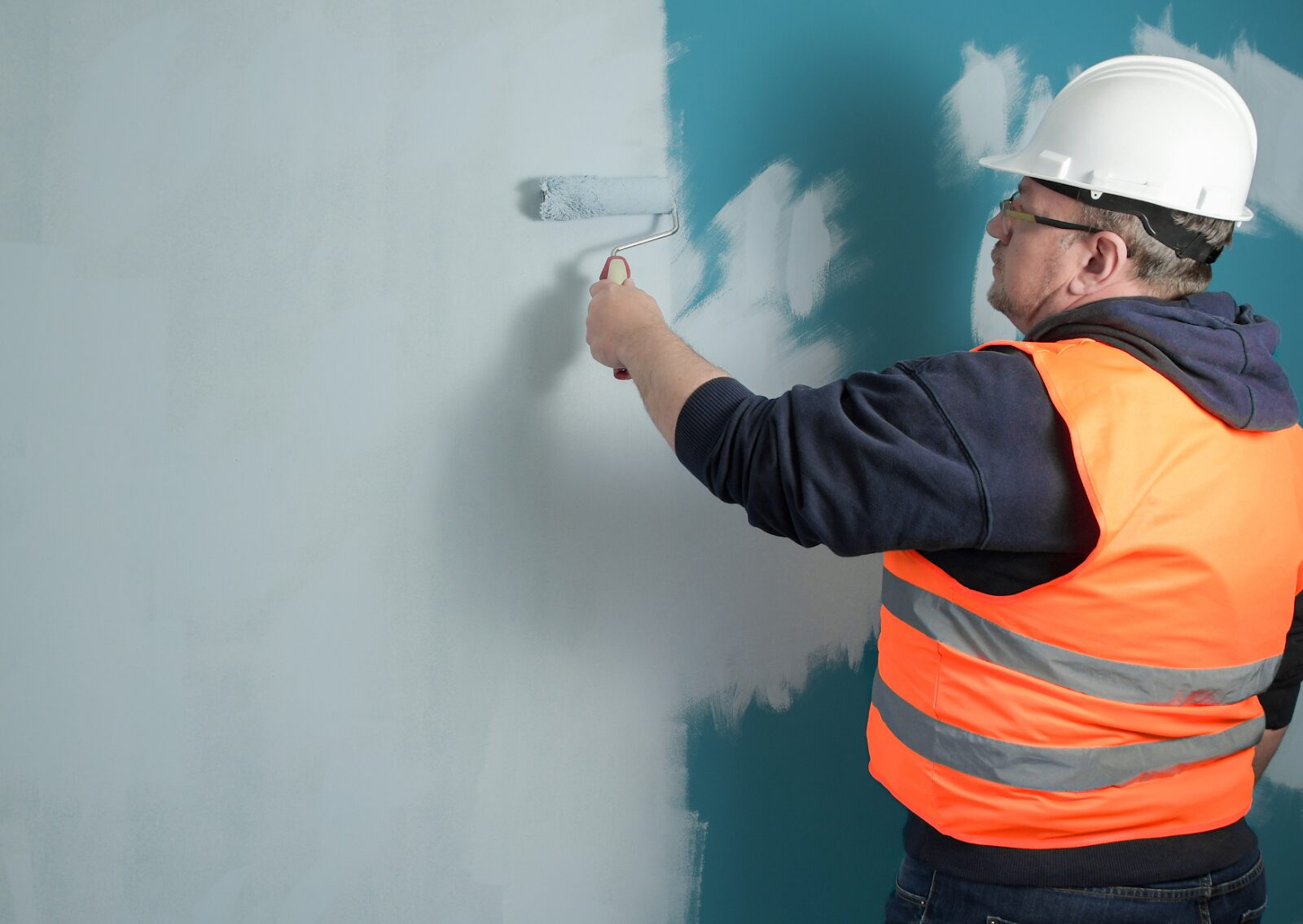
Painting your home with light colors can create a fresh, inviting atmosphere that makes spaces feel larger and more open. Whether you’re working on interior or exterior surfaces, achieving the perfect finish with light colors requires careful planning and the right techniques. In this guide, we’ll walk you through everything you need to know to paint light colors beautifully, cover dark paint, and ensure your wall paint job is flawless. Painting over darker color walls can be particularly challenging, but with the right approach, it’s entirely achievable. Let’s dive into the steps for transforming your spaces.
Preparation Is Key

Before you start painting, proper preparation is essential. Begin by cleaning your walls with a microfiber cloth to remove dust and debris. Fill holes and sand the surface to ensure it’s smooth. This step is crucial because light colors tend to highlight imperfections more than dark colors. Proper prep work ensures your new paint adheres well and looks professional. It also helps the paint completely cover the previous color, especially when dealing with dark paint.
Choosing the Right Supplies

To achieve the best results, you need high quality paint and the right tools. Opt for a paint and primer in one to save time and ensure even coverage. Using high-quality acrylic paint will provide better adhesion and durability. Painter’s tape is essential for protecting edges and achieving clean lines. For a dark wall, using the best primer is key to covering the original color effectively. Invest in the right supplies to make your painting process smoother and more efficient.
Primer: The Foundation of a Good Paint Job

When painting over dark walls with a lighter color, using a white primer is vital. This step helps to cover dark walls and ensures that the new color is vibrant and true to the sample. For very dark colors like dark green, a darker primer can be used as an intermediary step.
Applying at least two coats of primer will help achieve complete coverage and prevent the original color from bleeding through. A good primer also helps to smooth out the surface, making it easier for the first coat of light color to look perfect.
Techniques for Interior Spaces

When painting interior spaces, the technique is just as important as the products you use.
- Start with the ceiling and work your way down.
- Use a thinner nap roller for a smooth finish on walls.
- Applying the first coat evenly is crucial; use a roller with a slanted part to reach into corners and edges.
- Avoid heavy coverage on the first pass to prevent roller lines.
- Let the first coat dry completely before applying the second coat for the best results.
- Multiple coats might be necessary to cover dark paint effectively.
- Using painter’s tape can help achieve clean lines.
- Always follow the manufacturer’s instructions for drying times between coats.
Techniques for Exterior Spaces

Painting exterior spaces comes with its own set of challenges. Weather conditions can significantly impact your paint job, so choose a dry, overcast day for painting. Use a thicker nap roller or a paint sprayer for even coverage on rough surfaces like brick or stucco. Multiple coats may be necessary to achieve a consistent color and to cover dark paint effectively.
Proper prep work includes cleaning the surface and using a primer to ensure the new color adheres well. Don’t forget to sand any rough patches to create a smooth base for your color paint.
Dealing with Dark Colors

Covering dark paint with a lighter one can be tricky. It often requires more coats to achieve even coverage. Be patient and apply thinner layers to avoid drips and uneven texture. Using the best primer can help reduce the number of coats needed. If you’re unsure how many coats are required, it’s better to err on the side of more rather than fewer coats. Light colors need more layers to cover dark colors completely and to ensure the final hue is even and vibrant.
Tips for a Smooth Finish

Achieving a smooth finish with light colors involves careful attention to detail. Use a brush for cutting along edges and a roller for larger surfaces. Work in small sections and maintain a wet edge to avoid lap marks. Lightly sand between coats to remove any imperfections and ensure a flawless finish. High-quality paint will help achieve a more even coverage.
Don’t rush the process; let each coat dry thoroughly before applying the next to avoid patchiness and ensure complete coverage.
Common Mistakes to Avoid

One common mistake when painting light colors is not using enough coats of primer.
- Skimping on primer can lead to the original dark color showing through, especially when dealing with dark walls.
- Another mistake is not allowing enough drying time between coats, which can result in a patchy appearance.
- Always follow the manufacturer’s instructions for drying times and number of coats.
- Proper preparation and patience are key to a successful paint job.
- Ensure that you use the right tools, such as painter’s tape and quality brushes, to avoid common issues like roller lines and uneven edges.
- Using high-quality paint will also help avoid common pitfalls.
- Do not rush the drying process; ensure each coat is fully dry before applying the next.
Professional Help: When to Call M&E Painting

If you’re feeling overwhelmed by the process or if your space has particularly challenging surfaces, consider hiring professionals like M&E Painting. Their expertise can save you time and ensure a high-quality finish. They offer interior and exterior painting services, making them a one-stop solution for all your painting needs. With their professional touch, you can be assured of even coverage and a flawless finish. M&E Painting uses only the best materials to ensure your paint job lasts for years.
Maintaining Your New Paint Job

Once you’ve achieved the perfect light color finish, maintaining it is crucial. Regular cleaning with a mild detergent and a soft cloth can keep your walls looking fresh. Touch up any nicks or scratches promptly to prevent them from becoming larger issues. With proper care, your light-colored walls can remain stunning for years to come. Regular maintenance will help in retaining the vibrancy and cleanliness of your new paint. M&E Painting can provide advice on the best maintenance practices for your specific paint type.
Elevate Your Home with M&E Painting’s Expert Services

Transform your living spaces with the beauty of light colors and let the experts at M&E Painting handle the hard work. Whether it’s an interior makeover or an exterior refresh, M&E Painting guarantees exceptional results and professional service. Don’t wait – visit M&E Painting now to schedule your consultation and take the first step toward your stunning new space! Their team is ready to assist you in making your home look its best with top-notch painting services.
Painting light colors can completely change the look and feel of your home, making it brighter and more welcoming. By following these tips and techniques, you can achieve a professional-quality finish whether you’re tackling interior or exterior spaces. Remember, preparation and the right supplies are key to success. And if you ever need help, don’t hesitate to call M&E Painting for expert assistance. Happy painting! Whether it’s a single wall or your entire home, the right approach will make all the difference.
Frequently Asked Questions: How Can You Paint Light Color for Stunning Interior and Exterior Spaces?
Q: What are the key steps to properly prepare surfaces before painting with light colors?
A: The key steps for proper surface preparation include cleaning the walls with a microfiber cloth to remove dust and debris, filling holes, and sanding the surface to ensure it’s smooth. This is crucial because light colors tend to highlight imperfections more than dark colors.
Q: Why is using a primer important when painting over dark walls with a lighter color?
A: Using a white primer is vital when painting over dark walls with a lighter color. It helps to cover the dark walls and ensures that the new color is vibrant and true to the sample. Applying at least two coats of primer will help achieve complete coverage and prevent the original color from bleeding through.
Q: What techniques should be used when painting interior spaces with light colors?
A: When painting interior spaces, start with the ceiling and work your way down. Use a thinner nap roller for a smooth finish on walls, and apply the first coat evenly using a roller with a slanted part to reach into corners and edges. Avoid heavy coverage on the first pass to prevent roller lines, and let the first coat dry completely before applying the second coat.
Q: How can one achieve a smooth finish when painting with light colors?
A: To achieve a smooth finish with light colors, use a brush for cutting along edges and a roller for larger surfaces. Work in small sections and maintain a wet edge to avoid lap marks. Lightly sand between coats to remove any imperfections. Use high-quality paint for more even coverage and allow each coat to dry thoroughly before applying the next.
Q: When should one consider hiring professional painters like M&E Painting?
A: If you’re feeling overwhelmed by the process or if your space has particularly challenging surfaces, consider hiring professionals like M&E Painting. Their expertise can save you time and ensure a high-quality finish. They offer interior and exterior painting services and use only the best materials to ensure your paint job lasts for years.
